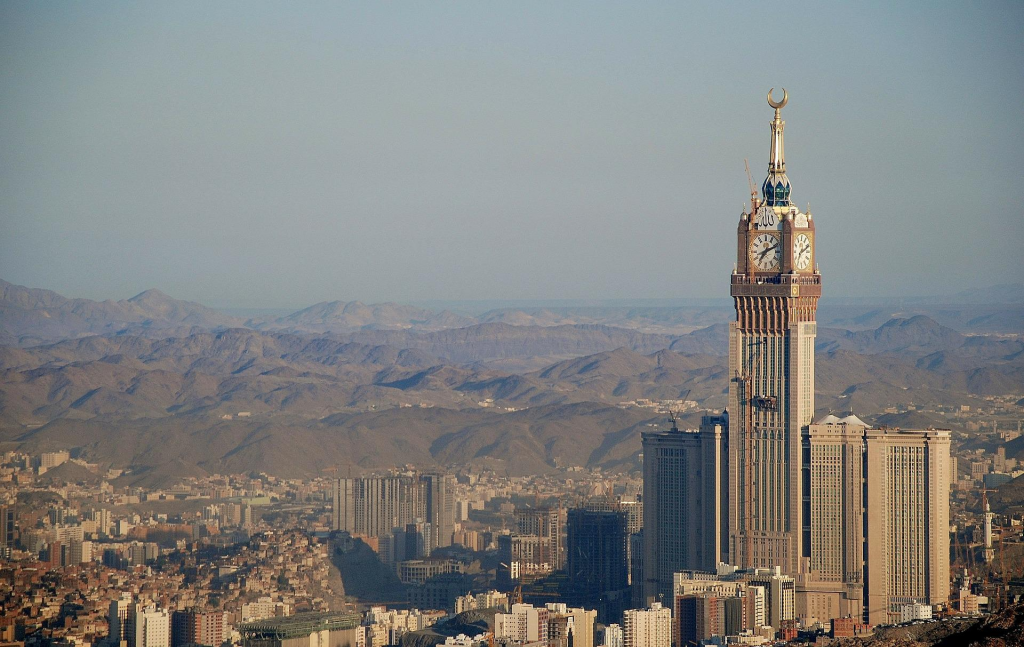There’s no scarcity when it comes to obesity within the modern world. For many of us, food is in abundance, with mass production pumping out addictive junk food and making it easily accessible.
Not only are we getting hooked onto eating bad food with poor control over our diets, but humans today are also living less active lifestyles than our ancestors who used to hunt to survive, while we now spend most of our time behind desks or lounging on couches.
Cultures and laws have the power to increase or decrease obesity on a national scale. The bad habit that leads to obesity can easily start out as a kid watching Mukbang YouTube videos where individuals eat an excessive amount of food, then coming across billboards and tv advertisements for fast food chains.
We get bombarded by positive messages that promote excessive eating, with cheap fast-food places all around us. At the same time, there’s a counter-movement in media to denounce obesity and the lifestyles that contribute to it.
Even certain governmental restrictions have been deployed. In the UK, a sugar tax was introduced in 2018, which increased the prices of high-sugar drinks—cutting consumption by 10% and influencing manufacturers to cut back on sugar in their products.
The following list gives insight into the systematic factors that have led to these countries having the highest obesity rates in the world. As a wise person once said, you can only fix a problem by identifying the root issue.
1. The Pacific Islands (Polynesia & Micronesia)

While the region is technically a geographical area of island nations in the Pacific Ocean, each country is home to some of the smallest land masses and populations in the world. Surprisingly, almost all the island nations in this region would fill up the top 10 list of highest obesity rates in the world.
However, this list of global obesity rates wouldn’t be fair to pit a pacific island nation with a few thousand civilians against mainland countries with populations in the millions.
After considering that pacific islands with the highest rates in the globe neighbour each other and have ethno-cultural ties with one another, it’s only fair to include them in totality as the number 1 spot in this list with an overall population of 850,672 people with above 45% being identified as obese.
Nations with the highest obesity rates in the pacific islands include the following (% represents obesity rate):
- Nauru (61.00%)
- Cook Islands (55.90%)
- Palau (55.30%)
- Marshall Islands (52.90%)
- Tuvalu (51.60%)
- Niue (50.00%)
- Tonga (48.20%)
- Samoa (47.30%)
- Kiribati (46.00%)
- Micronesia (45.80%)
Genetics & Controversy
There is an argument around the classification of obesity for pacific islanders since the BMI measurement that determines if you’re obese or not has been fitted towards Caucasian body types that factor in their average weight of bones and muscles.
However, Polynesians and Micronesians are known to have denser bones and muscles on average than Caucasians, so the BMI measurement should be adjusted to their body types for a more accurate obesity rate.
A counterargument to this point is that despite the naturally heavier body types of pacific islanders, they still have an alarming rate of cardiovascular disease and type 2 diabetes in general, which is a product of high body fat accounted to poor diet & lack of exercise.
Lifestyles & Diet
In the past 100 years, the Pacific Islands have seen a drastic shift in cultural change, from tribal hunter-gatherers to Western-influenced nations facing the new-age issues associated with developing countries, globalisation and commercialisation.
Thus traditional diets such as fish, fruits and vegetables are seemingly becoming phased out by processed imported foods high in salt & calories such as fast foods, spam and corned beef.
Two other cheap and highly accessible foods in the Pacific Islands are mutton flaps and turkey tails, both high in saturated fats and popular amongst low-income families.
While the Pacific Islands have benefited from modern advancements such as technology, manufacturing and supermarkets. In return, it’s promoted a sedentary lifestyle amongst the islanders, which is reasonably appealing given that people worldwide love to go on holidays to the pacific islands just to relax thanks to the climate and landscape.
However, the ideal conditions for relaxation can be problematic when incubated there long-term. With culture promoting relaxation on the pacific islands, it’s understandable why the people fall into this unhealthy long-term lifestyle.
2. United States of America

USA has many nicknames; ‘the chairman of capitalism’ or ‘the king of consumption’; its venture capital track sheet makes these titles plausible, too. With seven out of the top ten most valuable global brands belonging to America. These include:
- Apple
- Amazon
- Microsoft
- Coca-Cola
- McDonalds
- Disney
Coca-Cola and McDonalds are both food companies known for their unhealthy ingredients but just as popular and in-demand as technology and automobile companies that have greater practical application for society.
With two of America’s top brands being food companies, it’s no surprise that the most popular food and fast-food brands in the world all belong to the United States.
On a domestic scale, the US has the most fast-food restaurants available in their country compared to anywhere globally. So if you’re from the states, it’s not hard to find your fix for highly saturated and rich in preservatives ‘goodness’. There is over 14,000 McDonald’s located in America, with Japan coming in 2nd place with 2,975 McDonalds—there’s simply no comparison from a global measure.
Culture & Lifestyle
From a history of freedom & liberty in a capitalist society, it has set the perfect conditions for a boom in food businesses that dismissed health concerns in favour of pleasing citizens. Over time, a culture of excess eating of unhealthy foods has contributed to America’s 36.2% obesity rate with an outstanding population of 329.5 million!
More than one-third of Americans are classified as obese. With the country being a powerhouse in the tech and motor industries, it’s contributed to a lifestyle revolved around driving or sitting behind screens, reducing the need for people to walk or be active.
While the biggest industries belong to America and power its economy, it has negatively affected American civilians who use their freedom to spoil themselves with being lazier and unhealthier with the products from food, tech and motor companies that dominate and monopolise the country. Opposing forces such as healthy food companies remain niche and less appealing to the citizens.
3. Arabian Peninsula

In a similar situation to the Pacific Islands, the geographic location of the Arabian Peninsula is made up of several countries that dominate the world rankings in obesity rates—filling up most of the top 20 spots.
Saudi Arabia is the largest country with a population of 34.8 million and 35.4% obesity rate. The other nations with the highest obesity rates in the peninsula all border Saudi Arabia and are relatively small and comparable in size with the Pacific Islands. The countries include (% represents obesity rate):
- Kuwait (37.9%)
- Jordan (35.5%)
- Qatar (35.1%)
In total, the nations make up an overall population of 52.4 million, with an average obesity rate around 36%. To draw a comparison, USA has over six times the population but nearly the same obesity rate as the Arabian Peninsula.
Culture & Lifestyle
The economies of these countries have greatly benefited from oil production. In return, many Arabs have secured lavish lifestyles comprised of housemaids, servants, private drivers, and high-end technology to make life easier but also makes themselves lazier.
Western Businesses capitalised on the rising wealth of the Arabian Peninsula by introducing their high-carb and high-fat foods to the country that didn’t mix well with the increasingly sedentary lifestyle of Arab people who were storing way more calories than burning them.
A cultural taboo in the Arabian Peninsula that added to the list of the detrimental factors for health is the cultural discouragement of female exercise. Women make up the largest percentage in obesity rates and conduct in the least exercise.
The Arabian Peninsula is known for its unfair restrictions upon women compared to men. Many women are still not taught physical education in schools. When they do, their facilities and scope in progressing in sports as they get older are significantly limited compared to the opportunities women have elsewhere in the world.
There are Arab women forced by families to cover up in niqabs when they go outside, so it’s not feasible to expect these women to go on a jog outside in scorching heat, fully covered in a black niqab, when already they’re expected to not draw attention to themselves from men in public.
4. Libya

Verging west of the Arabian Peninsula into North Africa is Libya, a country with a relatively small population of 6.8 million and an obesity rate of 32.5%. Like the United States, Libya has its own culture and influences of obesity separate from its neighbours.
According to the Food and Agriculture Organization (FAO), the staple Libyan diet consists of high-carb wheat foods such as cereals, bread, pasta, and couscous. In total, carbohydrates make up 62% of the Libyan diet.
Fat consumption comes in 2nd place, taking up 27% of the Libyan diet, mainly attributed to high-fat oils included in many popular Libyan dishes.
In history, Libyans would embark on gruelling journeys through expansive desert landscapes, so high energy foods had their advantage being part of the Libyan diet. From between 1967 to 2001 in Libya, there was a sharp increase in food consumption by 1.5 times.
Like other countries in this list, modernisation took its toll by encouraging a more sedentary lifestyle amongst Libyans, despite their diet being built around high-energy lifestyles, and their consumption rate was increasing.
Similar to Saudi Arabia, obesity is more common amongst women than men due to the cultural restriction imposed onto Libyan women that shuns or prevents them from exercising and pushes them to be stationary housewives.
In fact, a 2020 study from the international journal of open medicine and surgery conclude that obesity of women in Libya more than doubles the number of their obese male counterparts.
5. Turkey

In 2018, the World Health Organization (WHO) had reported that Turkey had finally become the most obese nation in Europe. Definitely not the country’s proudest title given to them, especially considering that Turkey has been painstakingly waiting for EU member status. Instead, WHO awards them with a slap in the face.
It’s not getting any better for Turkey since the COVID pandemic has turned obesity into a pandemic for the country. Since 2008, the obesity rate has continued to increase, with 2020 and upwards having the most significant growth in obesity rates.
Turkey has a population of 85 million and a 32.10% obesity rate. Most reports suggest that Turkey suffers from an overall lack of physical activity amongst the population—in particular, women, with 39.1% suffering from obesity, opposed to 24.5% of obese men in Turkey.
The average Turkish diet is becoming increasingly high in unsaturated fats and salts, while being poor in fibre and vitamins. Therefore, many Turkish people are storing fat and not getting enough nutrition, leading to many health issues such as heart disease and type-2 diabetes.
A report by Al-Jazeera News in 2017 aimed to shed light on Turkey’s rising risk of obesity, highlighting that only 20% of Turkish people exercise. Sadly, the awareness of this report has not been able to motivate the general Turkish population to reduce obesity since it has been continuing to rise.
Conclusion
Countries with the highest obesity rates tend to consume high-energy foods on average while having physically inactive lifestyles—this is the popular formula to spread obesity amongst a society.
A simple method to tackle the issue is to promote more physical exercise for all genders and promote a more varied diet, such as introducing fibre-rich foods, recipes and cuisines to countries unfamiliar with them. Still, change can be made with the education around the topic.




